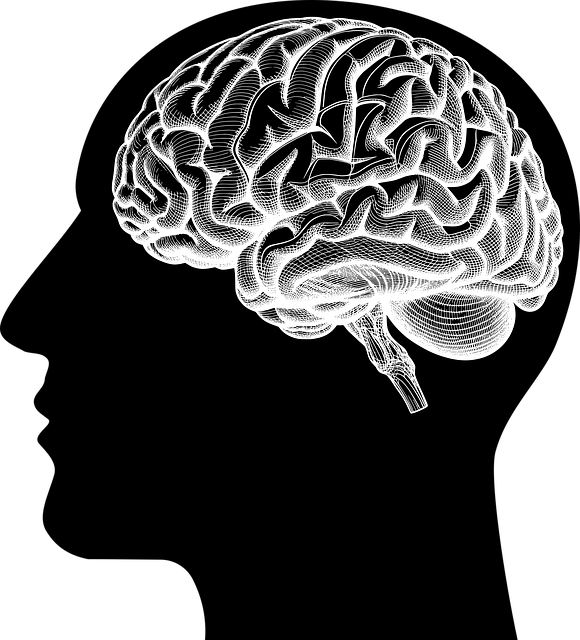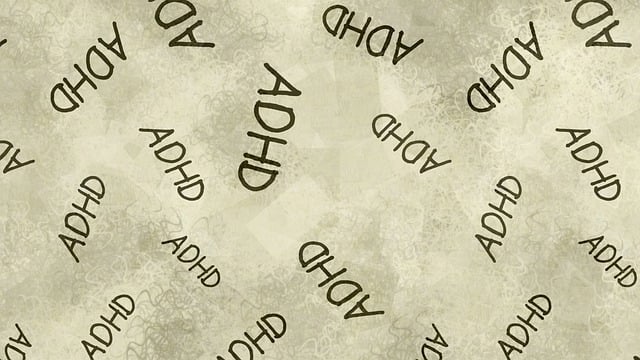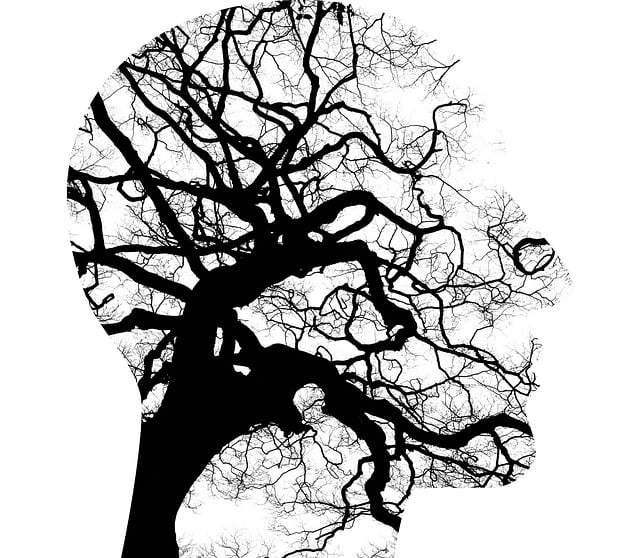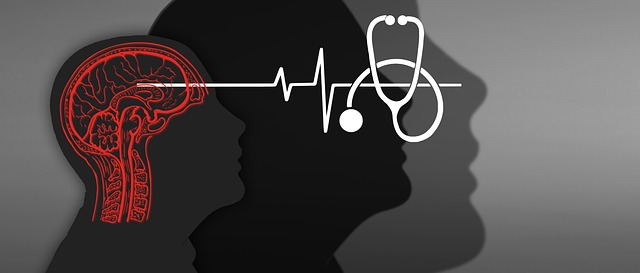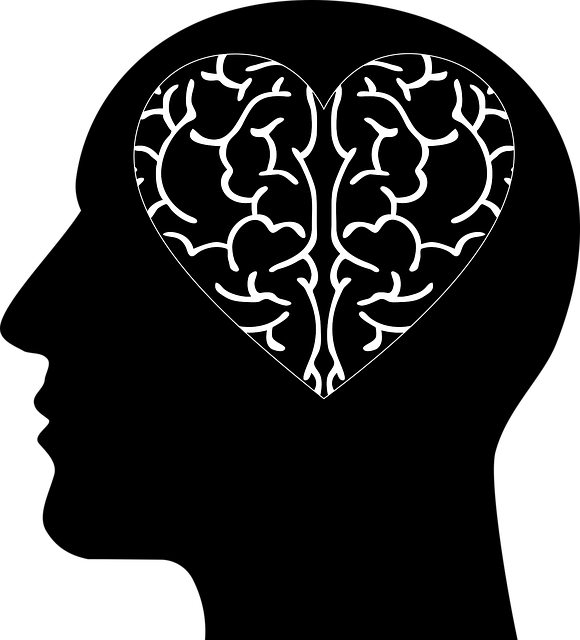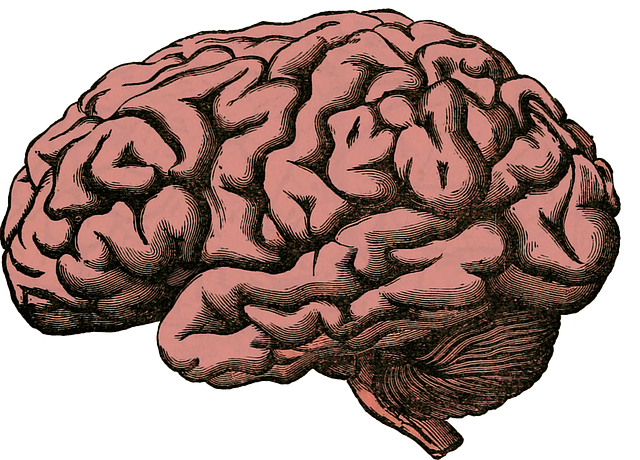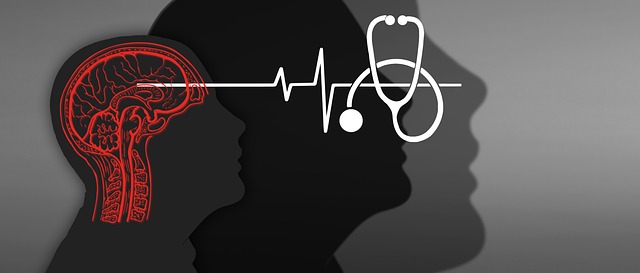Parker EMDR Therapy, an 8-phase cognitive-emotional approach developed in the 1980s by Francine Shapiro, is a globally recognized treatment for trauma-related mental health conditions. It facilitates brain communication to process traumatic memories effectively and has proven successful in treating PTSD, depression, anxiety, and more. When evaluating mental wellness programs, a blend of qualitative (one-on-one discussions, focus groups) and quantitative (structured interviews, standardized questionnaires) methods is essential for understanding nuanced improvements and overall well-being. This holistic approach includes client feedback on techniques like Compassion Cultivation Practices, Self-Awareness Exercises, and Positive Thinking strategies. Long-term evaluation using robust methods like Parker EMDR Therapy can measure the sustainability and effectiveness of wellness programs in managing conditions like burnout, identifying KPIs that demonstrate success beyond initial interventions.
Mental wellness program evaluations are pivotal for assessing the effectiveness and impact of interventions like Parker EMDR Therapy. This comprehensive overview explores various evaluation methods, from qualitative insights through client feedback to quantitative measures of long-term outcomes. By understanding both qualitative and quantitative approaches, mental health professionals can gain a holistic view of treatment success and inform program improvements. Discover how these strategies contribute to the efficacy and sustainability of mental wellness initiatives, with a special focus on Parker EMDR Therapy.
- Understanding Parker EMDR Therapy: A Comprehensive Overview
- Assessing the Efficacy of Mental Wellness Programs
- Qualitative vs Quantitative Evaluation Methods
- Incorporating Client Feedback and Subjective Reports
- Measuring Long-Term Impact and Sustainability
Understanding Parker EMDR Therapy: A Comprehensive Overview

Parker EMDR Therapy is a highly effective approach for treating mental health conditions, particularly those stemming from trauma. Developed by Francine Shapiro in the 1980s, it has since evolved into a comprehensive therapeutic method recognized worldwide. The therapy utilizes a combination of cognitive and emotional techniques to help individuals process traumatic memories and reduce the intensity of associated symptoms. By focusing on eye movement patterns or other bilateral stimulation methods, Parker EMDR facilitates communication between the brain’s left and right hemispheres, allowing for deeper understanding and resolution of distressing events.
This innovative therapy is structured in eight phases, ensuring a systematic and safe exploration of traumatic memories. It begins with an assessment to establish treatment goals and identify specific trauma-related issues. Subsequent phases involve preparation, where communication strategies are taught to enhance client resilience; evaluation, during which the therapist assesses the impact of the trauma on various aspects of the individual’s life; and subsequent interventions tailored to address specific symptoms. The process culminates in reprocessing, where clients integrate new insights gained from the therapy into their daily lives, leading to improved coping mechanisms and overall well-being. Parker EMDR Therapy has been extensively researched and proven effective in treating post-traumatic stress disorder (PTSD), depression, anxiety, and other trauma-related disorders, making it a valuable tool for Trauma Support Services and Stress Management Workshops Organization.
Assessing the Efficacy of Mental Wellness Programs

Evaluating the effectiveness of mental wellness programs is a multifaceted process that goes beyond simple self-report. Tools like structured interviews and standardized questionnaires can measure changes in symptoms, but they often fail to capture the nuanced improvements participants experience. Thus, qualitative methods, including one-on-one discussions and focus groups, offer valuable insights into participants’ perceptions of program impact on their emotional regulation, self-care practices, and overall well-being.
In the context of healthcare settings, where burnout prevention strategies are increasingly prioritized, evaluating mental wellness programs can help identify which interventions effectively alleviate symptoms of stress and fatigue among providers. For instance, examining the effects of innovative therapeutic approaches like Parker EMDR Therapy (Eye Movement Desensitization and Reprocessing) can shed light on their potential to enhance resilience and improve mental health outcomes in both patients and healthcare professionals.
Qualitative vs Quantitative Evaluation Methods

In the realm of mental wellness program evaluation, researchers and practitioners often find themselves contemplating the delicate balance between Qualitative and Quantitative methods. While both serve crucial roles in understanding the effectiveness of interventions like Parker EMDR Therapy, they offer distinct insights into different aspects of client experiences and outcomes.
Qualitative approaches, with their emphasis on depth and context, provide rich narrative data that can unveil intricate emotional journeys, personal reflections, and transformative moments experienced by individuals undergoing therapy. This method is particularly effective for exploring complex topics related to mental health, cultivating confidence boosting narratives, and uncovering subtleties not immediately apparent through numerical metrics. Conversely, Quantitative methods, grounded in statistical analysis, offer a broader perspective by quantifying changes in symptoms, behaviors, and overall functioning over time. They are instrumental in assessing the efficacy of programs for burnout prevention, particularly among healthcare providers who frequently face intense workloads, by providing concrete data on improvements in well-being and resilience.
Incorporating Client Feedback and Subjective Reports

Incorporating client feedback and subjective reports is an integral aspect of evaluating mental wellness programs, offering valuable insights into the program’s effectiveness from the individual’s perspective. This approach provides a holistic understanding of the therapeutic journey, as it allows clients to articulate their experiences, emotions, and perceptions related to the treatments they’ve received. By encouraging open dialogue, practitioners can gather qualitative data that complements quantitative measures, ensuring a comprehensive assessment.
Through methods like structured interviews, surveys, or focus groups, clients can share their thoughts on various aspects of the program, including the therapeutic techniques employed, such as those found in Parker EMDR Therapy. This includes evaluations of Compassion Cultivation Practices, Self-Awareness Exercises, and Positive Thinking strategies, all of which are key components in many modern mental wellness programs. Subjective reports help identify areas of success, potential challenges, and unmet needs, guiding future adjustments to tailor interventions for optimal client outcomes.
Measuring Long-Term Impact and Sustainability

Evaluating the long-term impact of mental wellness programs is essential to understanding their sustainability and effectiveness. This aspect becomes increasingly critical in managing conditions like burnout, which often arises from prolonged exposure to stress. Programs designed to mitigate burnout, such as community outreach initiatives offering trauma support services, must demonstrate resilience over time. By employing robust evaluation methods, these programs can identify key performance indicators (KPIs) that measure success beyond initial intervention.
One promising approach for assessing long-term outcomes is through the lens of EMDR (Eye Movement Desensitization and Reprocessing) Therapy, a well-researched technique in trauma support services. By tracking participants’ progress over extended periods, researchers can gauge the lasting effects of such interventions. This includes measuring changes in mental health status, reduced need for crisis support, and improved overall wellness, thereby ensuring that community outreach programs, like those focused on burnout prevention, continue to deliver value and remain relevant in individuals’ lives.
The evaluation of mental wellness programs is a multifaceted process, especially when employing innovative approaches like Parker EMDR Therapy. By combining qualitative and quantitative methods, including client feedback and long-term impact assessments, practitioners can gain a holistic understanding of treatment efficacy. This comprehensive evaluation ensures that mental health services are not only effective in the short term but also sustainable, fostering continued positive outcomes for individuals seeking support. Understanding these diverse evaluation techniques empowers professionals to make informed decisions and adapt their practices, ultimately enhancing the overall well-being of clients through evidence-based care, particularly with the focus on Parker EMDR Therapy’s unique benefits.
